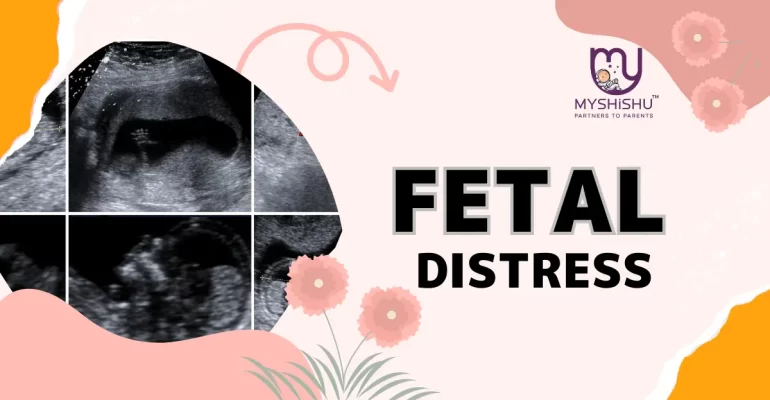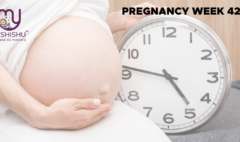Fetal Distress (NRFS): A Complete Overview
Fetal Distress (NRFS): A Complete Overview
Embark on a journey of understanding as we delve into the intricate topic of fetal distress (nrfs) called non-reassuring fetal status. In this comprehensive guide, we explore the signs, causes, and management of fetal distress, a condition that can arise during pregnancy or labor, potentially endangering the well-being of both mother and baby. From recognizing the subtle signs to understanding the underlying factors contributing to fetal distress, this blog provides valuable insights for expectant parents and healthcare providers alike. Join us as we shed light on this important aspect of pregnancy and childbirth, ensuring informed decisions and optimal care for all involved.
Introduction
Pregnancy, a time of profound anticipation and joy, can also present challenges, one of which is fetal distress (nrfs). This condition, marked by compromised oxygen supply to the baby during pregnancy or labor, requires vigilant monitoring and timely intervention. In this comprehensive guide, we embark on a journey to unravel the complexities of fetal distress. From understanding its subtle signs to exploring the myriad factors contributing to its occurrence, we equip expectant parents and healthcare providers with the essential knowledge to navigate this critical aspect of pregnancy. Join us as we delve into the intricacies of fetal distress, ensuring informed decisions and optimal outcomes for mother and baby alike.
Table of Contents
What is fetal distress (nrfs)?
fetal distress (nrfs), also termed non-reassuring fetal status, encompasses a spectrum of conditions wherein the unborn baby’s oxygen supply becomes compromised during pregnancy or labor. This can result from various factors, potentially posing risks to the baby’s well-being if not promptly addressed. Typically diagnosed through abnormal fetal heart rate patterns, decreased fetal movement, or other indicators, fetal distress demands immediate medical attention to prevent adverse outcomes. Understanding the nuances of fetal distress is crucial for expectant parents and healthcare providers alike, as timely intervention can mitigate risks and ensure the safe delivery of a healthy baby.
Why does it occur?
fetal distress (nrfs) can occur due to a multitude of factors, each affecting the baby’s oxygen supply or overall well-being during pregnancy or labor. Common contributors include placental insufficiency, umbilical cord compression, maternal health conditions like hypertension or diabetes, intrauterine growth restriction (IUGR), and maternal infections. Additionally, factors such as meconium aspiration, fetal anomalies, or prolonged labor can heighten the risk of fetal distress. Understanding these underlying causes is vital, as it enables healthcare providers to promptly identify and address potential issues, safeguarding the health and vitality of both mother and baby throughout the pregnancy and childbirth journey.

Symptoms and causes
Recognizing the subtle signs of fetal distress (nrfs) is crucial for prompt intervention and ensuring the well-being of both mother and baby. While some symptoms may be evident during pregnancy, others may manifest during labor. Here are the key symptoms to be aware of:
- Abnormal Fetal Heart Rate Patterns: One of the primary indicators of fetal distress is an abnormal fetal heart rate. This may include tachycardia (rapid heart rate), bradycardia (slow heart rate), or decelerations (temporary drops in heart rate) observed during fetal monitoring.
- Decreased Fetal Movement: A noticeable decrease in fetal movement or a significant change in the pattern of movement can signal fetal distress. Expectant mothers are advised to monitor fetal movements regularly and report any deviations from the norm to their healthcare provider.
- Meconium-Stained Amniotic Fluid: Meconium, the baby’s first stool, is normally passed after birth. However, if it is present in the amniotic fluid before delivery, it may indicate fetal distress, as the baby may have experienced stress in the uterus, leading to the passage of meconium.
- Abnormal Levels of Amniotic Fluid: Excessive or reduced levels of amniotic fluid (polyhydramnios or oligohydramnios, respectively) can be associated with fetal distress. These abnormalities may result from underlying conditions affecting fetal well-being.
- Maternal Symptoms: In some cases, maternal symptoms such as vaginal bleeding, severe abdominal pain, hypertension (high blood pressure), or signs of infection may accompany fetal distress. These symptoms warrant immediate medical attention to assess fetal status and maternal health.
Causes
fetal distress (nrfs) can arise from various factors that compromise the baby’s oxygen supply or overall well-being during pregnancy or labor. Understanding these underlying causes is essential for timely intervention and management. Here are the primary contributors to fetal distress (nrfs):
- Placental Insufficiency: A compromised placenta may fail to adequately supply oxygen and nutrients to the baby, leading to fetal distress. Placental insufficiency can result from conditions such as placental abruption, placenta previa, or poor placental development.
- Umbilical Cord Compression: Compression or entanglement of the umbilical cord during pregnancy or labor can restrict blood flow and oxygen delivery to the baby. This may occur due to a nuchal cord (cord wrapped around the baby’s neck), cord prolapse, or cord compression against the pelvis.
- Maternal Health Conditions: Maternal health conditions such as hypertension (high blood pressure), diabetes (gestational or pre-existing), preeclampsia, or maternal infections can impair fetal oxygenation and contribute to fetal distress (nrfs).
- Intrauterine Growth Restriction (IUGR): IUGR occurs when the baby fails to reach its expected growth potential in the womb. This can result from placental insufficiency, maternal malnutrition, genetic factors, or maternal health conditions, leading to fetal distress due to inadequate oxygen and nutrient supply.
- Maternal Factors: Maternal factors such as smoking, drug use, alcohol consumption, or advanced maternal age can increase the risk of fetal distress (nrfs). These factors may adversely affect placental function, blood flow to the uterus, or maternal-fetal oxygen exchange.
- Fetal Anomalies: Structural or chromosomal abnormalities in the baby can predispose them to fetal distress. These anomalies may affect organ development, oxygenation, or overall fetal well-being, necessitating close monitoring and specialized care.
- Prolonged Labor: Prolonged or dysfunctional labor can subject the baby to prolonged stress, potentially leading to fetal distress. Factors such as inadequate uterine contractions, malpresentation, or cephalopelvic disproportion may contribute to prolonged labor and fetal distress (nrfs).
Understanding the symptoms and causes of fetal distress (nrfs) empowers expectant parents and healthcare providers to recognize early warning signs, intervene promptly, and optimize outcomes for both mother and baby. Regular prenatal care, fetal monitoring, and timely intervention are essential in managing fetal distress and ensuring a safe and healthy pregnancy and childbirth experience.
Diagnosis and Tests for Fetal Distress
Diagnosing fetal distress (nrfs) involves a comprehensive assessment of fetal well-being through various tests and monitoring techniques. Healthcare providers employ a combination of fetal monitoring, imaging studies, and maternal evaluation to identify signs of fetal distress and guide appropriate management. Here are the key diagnostic methods and tests used in the assessment of fetal distress (nrfs):
- Fetal heart rate monitoring:
- Continuous Electronic Fetal Monitoring (EFM): EFM involves placing sensors on the mother’s abdomen to monitor the baby’s heart rate and uterine contractions continuously during labor. Abnormal fetal heart rate patterns, such as decelerations or tachycardia, may indicate fetal distress (nrfs).
- Intermittent Auscultation: Intermittent auscultation involves periodically listening to the baby’s heart rate using a handheld Doppler ultrasound device during labor. While less invasive than EFM, it may be used in certain low-risk pregnancies or when continuous monitoring is not feasible.
- Non-Stress Test (NST):
- NST is a non-invasive test performed during pregnancy to assess fetal well-being by monitoring the baby’s heart rate in response to fetal movements. An NST is typically recommended for high-risk pregnancies or when concerns about fetal distress (nrfs) arise. A reactive NST, characterized by appropriate fetal heart rate accelerations in response to movement, is reassuring.
- Biophysical Profile (BPP):
- BPP combines fetal heart rate monitoring with ultrasound evaluation of fetal movements, muscle tone, breathing movements, and amniotic fluid volume. BPP assesses fetal well-being based on specific criteria, with a score of 8–10 considered reassuring, while a score below 6 may indicate fetal distress.
- Doppler Ultrasound:
- Doppler ultrasound measures blood flow in the umbilical cord and fetal vessels, providing valuable information about fetal circulation and oxygenation. Abnormal Doppler findings, such as absent or reversed end-diastolic flow in the umbilical artery, may indicate fetal distress and necessitate further evaluation.
- Amniotic Fluid Analysis:
- Amniotic fluid analysis may be performed if concerns about fetal distress arise, particularly in cases of meconium-stained amniotic fluid. Meconium staining may indicate fetal distress (nrfs), prompting additional assessment of fetal well-being and preparation for possible neonatal resuscitation.
- Maternal Evaluation:
- Maternal evaluation is essential in assessing potential maternal factors contributing to fetal distress (nrfs), such as maternal hypertension, diabetes, or infection. Monitoring maternal vital signs, conducting laboratory tests, and assessing maternal symptoms help identify and manage maternal conditions that may impact fetal well-being.
- Imaging Studies:
- Imaging studies such as ultrasound or fetal MRI may be used to assess fetal anatomy, growth, and development. These studies help identify structural anomalies, placental abnormalities, or conditions affecting fetal well-being, guiding appropriate management and intervention.
- Laboratory Tests:
- Laboratory tests, including maternal blood tests, urine analysis, and cultures, may be performed to assess maternal health and screen for infections or metabolic conditions that could impact fetal well-being.
Timely and accurate diagnosis of fetal distress is crucial for implementing appropriate management strategies to optimize outcomes for both mother and baby. Close collaboration between expectant parents and healthcare providers, along with regular prenatal care and monitoring, ensures comprehensive evaluation and timely intervention in cases of suspected fetal distress.

Management and Treatment of Fetal Distress
Effective management and treatment of fetal distress (nrfs) require prompt recognition of symptoms, accurate diagnosis, and timely intervention to optimize outcomes for both mother and baby. Healthcare providers employ a multi-faceted approach tailored to the specific needs of each case, aiming to alleviate fetal distress, minimize complications, and ensure safe delivery. Here are the key components of management and treatment for fetal distress (nrfs):
- Maternal Positioning and Oxygen Administration:
- In cases of suspected fetal distress (nrfs) during labor, maternal positioning may be adjusted to optimize uteroplacental blood flow and fetal oxygenation. Changing positions, such as moving from supine to lateral positions, can alleviate pressure on the vena cava and improve blood flow to the uterus.
- Oxygen administration via a face mask or nasal cannula may be initiated to increase maternal oxygenation and improve oxygen delivery to the baby. Supplemental oxygen can help alleviate fetal hypoxemia and mitigate the effects of fetal distress (nrfs).
- Intravenous Fluids and Maternal Hemodynamic Support:
- Intravenous (IV) fluids may be administered to maintain maternal hydration and support maternal hemodynamics during labor. Adequate hydration ensures optimal uteroplacental perfusion, supporting fetal oxygenation and well-being.
- Maternal hemodynamic support, including blood pressure management and treatment of maternal hypotension, is essential to maintain adequate perfusion to the placenta and mitigate the risk of fetal distress associated with maternal circulatory compromise.
- Tocolysis:
- Tocolytic agents may be used to inhibit uterine contractions and reduce uteroplacental vasoconstriction in cases of suspected fetal distress due to uterine hypertonus or contractions. Tocolysis can help improve uteroplacental blood flow and alleviate fetal hypoxemia during labor.
- Amnioinfusion:
- Amnioinfusion involves infusing sterile saline or Ringer’s lactate solution into the uterine cavity during labor to dilute meconium-stained amniotic fluid and improve fetal oxygenation. Amnioinfusion reduces the risk of meconium aspiration syndrome and mitigates the effects of fetal distress (nrfs) associated with meconium passage.
- Fetal Scalp Stimulation or Scalp Sampling:
- Fetal scalp stimulation involves gently rubbing the baby’s scalp during labor to elicit a fetal heart rate acceleration, indicating fetal well-being. Scalp sampling, performed concurrently, allows for direct assessment of fetal blood pH and oxygenation status, guiding further management decisions.
- Emergency Cesarean Delivery:
- In cases of severe or persistent fetal distress refractory to conservative measures, emergency cesarean delivery may be warranted to expedite delivery and mitigate the risk of adverse fetal outcomes. Cesarean delivery is indicated when fetal distress poses an immediate threat to the baby’s well-being or when vaginal delivery is contraindicated.
- Neonatal Resuscitation and Intensive Care:
- Following delivery, neonatal resuscitation may be initiated if the baby exhibits signs of respiratory distress, meconium aspiration, or other complications associated with fetal distress (nrfs). Neonatal intensive care may be required for babies with persistent respiratory compromise or other neonatal morbidities.
- Postpartum Monitoring and Follow-up:
- Postpartum monitoring of both mother and baby is essential to assess for any residual effects of fetal distress and ensure optimal recovery. Close observation, ongoing assessment, and follow-up care are provided to address any maternal or neonatal complications that may arise.
Effective management and treatment of fetal distress require a collaborative approach involving obstetricians, midwives, neonatologists, anesthesiologists, and other members of the healthcare team. Timely intervention, vigilant monitoring, and individualized care are essential to optimize outcomes for both mother and baby in cases of suspected fetal distress during pregnancy and labor.
What are the long-term effects?
While prompt intervention and effective management of fetal distress (nrfs) can mitigate immediate risks during pregnancy and childbirth, there may be potential long-term effects on both the baby and the mother. For the baby, prolonged or severe fetal distress may lead to complications such as hypoxic-ischemic encephalopathy (HIE), cerebral palsy, developmental delays, and cognitive impairments. These conditions can impact the baby’s neurological development, motor function, and overall quality of life. In some cases, fetal distress (nrfs) may result in stillbirth or neonatal death, highlighting the critical importance of timely intervention and monitoring.
For the mother, experiencing fetal distress (nrfs) during pregnancy or labor can have emotional and psychological repercussions. Mothers may experience feelings of guilt, anxiety, or trauma related to the perceived threat to their baby’s well-being. Additionally, complications arising from fetal distress (nrfs), such as emergency cesarean delivery or neonatal intensive care, may necessitate prolonged hospitalization, recovery, and adjustment to the challenges of caring for a newborn with special needs. Healthcare providers need to provide comprehensive support and counseling to both mothers and families affected by fetal distress (nrfs), addressing their physical, emotional, and psychological needs in the long term.
Prevention
Preventing fetal distress (nrfs) involves a multifaceted approach focused on optimizing maternal health, promoting healthy pregnancies, and facilitating safe childbirth experiences. While not all cases of fetal distress can be prevented, certain measures can help reduce the risk and improve outcomes for both mother and baby. Here are key strategies for preventing fetal distress (nrfs):
- Regular Prenatal Care: Early and regular prenatal care plays a crucial role in identifying and managing maternal health conditions that may contribute to fetal distress (nrfs). Healthcare providers monitor maternal health, screen for conditions such as hypertension, diabetes, or infections, and provide appropriate interventions to optimize fetal well-being.
- Healthy Lifestyle Choices: Encouraging expectant mothers to adopt healthy lifestyle habits, including nutritious diet choices, regular exercise, adequate hydration, and avoidance of harmful substances such as tobacco, alcohol, and illicit drugs, promotes optimal fetal development and reduces the risk of fetal distress (nrfs).
- Management of Chronic Health Conditions: Effective management of pre-existing maternal health conditions such as hypertension, diabetes, thyroid disorders, or autoimmune diseases is essential for minimizing the risk of complications that could lead to fetal distress (nrfs). Close monitoring, medication management, and lifestyle modifications help maintain maternal health and support fetal well-being.
- Monitoring Fetal Growth and Development: Regular ultrasound examinations and fetal growth assessments during pregnancy enable healthcare providers to monitor fetal growth and development, identify signs of intrauterine growth restriction (IUGR), and intervene promptly to prevent fetal distress associated with inadequate fetal growth.
- Antenatal Testing: Antenatal testing, such as non-stress tests (NSTs), biophysical profiles (BPPs), and Doppler ultrasound, may be recommended for high-risk pregnancies to assess fetal well-being and detect signs of fetal distress early. Timely intervention based on antenatal testing results helps prevent adverse outcomes and ensures optimal management of fetal distress (nrfs).
- Education and Support: Providing expectant parents with comprehensive education about fetal distress, its risk factors, warning signs, and available interventions empowers them to make informed decisions and seek timely medical attention if concerns arise. Access to prenatal education, childbirth classes, and support groups enhances maternal confidence and promotes proactive management of pregnancy-related issues.
- Preventive Measures During Labor: Implementing preventive measures during labor, such as maternal positioning, adequate hydration, and monitoring of maternal vital signs, helps optimize uteroplacental blood flow and reduces the risk of fetal distress (nrfs) associated with labor complications.
- Emergency Preparedness: Healthcare providers should be prepared to respond promptly to signs of fetal distress during labor, including timely escalation of care, emergency cesarean delivery if indicated, and neonatal resuscitation as needed. Emergency protocols, staff training, and interdisciplinary collaboration facilitate effective management of critical situations and minimize adverse outcomes.
By implementing these preventive measures, healthcare providers can reduce the incidence of fetal distress (nrfs), promote healthy pregnancies, and improve outcomes for both mother and baby. Early identification of risk factors, proactive management, and patient education are key components of a comprehensive approach to preventing fetal distress and ensuring safe and successful childbirth experiences.

When to seek the health care provider
It’s essential for expectant mothers to be vigilant about any signs or symptoms of fetal distress (nrfs) and to seek prompt medical attention if concerns arise. If you notice decreased fetal movement, abnormal fetal heart rate patterns, meconium-stained amniotic fluid, or experience symptoms such as vaginal bleeding, severe abdominal pain, or hypertension, it’s crucial to contact your healthcare provider immediately. Additionally, any persistent or concerning symptoms during labor, such as prolonged or intense contractions, warrant immediate medical evaluation. Early intervention and timely communication with your healthcare provider are vital to ensuring the safety and well-being of both you and your baby.
Additional common questions
-
How do I know if my unborn baby is in distress?
How is fetal distress diagnosed? Your pregnancy care provider diagnoses fetal distress by reading the fetal heart rate. A low heart rate, or unusual patterns in the heart rate, could signal fetal distress. Checking the fetal heart rate is a good way to find out if it’s tolerating pregnancy and labor well.
-
What is the term for fetal distress?
Non-reassuring fetal status is a term used to describe suspected fetal hypoxia and is meant to replace the more ubiquitous term “fetal distress.” Fetal distress, defined as progressive fetal hypoxia and/or acidemia secondary to inadequate fetal oxygenation, is a term that is used to indicate changes in the fetal heart.
-
Which of the following are signs of fetal distress (nrfs)?
The following symptoms can lead to fetal distress:
Decreased fetal movement. Severe back pain/intense cramping. Vaginal bleeding when pregnant. Rapid maternal weight gain of greater than 40 pounds.
-
What heart rate indicates fetal distress?
Fetal distress was defined as a heart rate greater than 160 or less than 120/min between uterine contractions, with or without meconium-stained liquor. Infants of 28 to 42 weeks gestational age were examined at 1 and 5 minutes after birth when the heart rate, respiration, and skin color were recorded.
-
Can mom feel fetal distress (nrfs)?
It’s common for mothers to experience cramping as the fetus grows and the uterus expands. However, if intense cramping, along with severe back pain is happening, it could point to fetal distress and other complications. Report cramping to your doctor as soon as you begin feeling them so that they can be monitored.
Conclusion
In conclusion, understanding fetal distress (nrfs) is paramount for expectant parents and healthcare providers alike. While it can pose risks during pregnancy and childbirth, early recognition, accurate diagnosis, and timely intervention are critical for mitigating adverse outcomes. By prioritizing regular prenatal care, adopting healthy lifestyle habits, and remaining vigilant for signs of fetal distress, expectant mothers can promote optimal fetal well-being. Moreover, comprehensive support from healthcare providers, coupled with proactive management strategies, enhances the likelihood of safe deliveries and positive outcomes for both mother and baby. Together, let’s strive to promote awareness,











